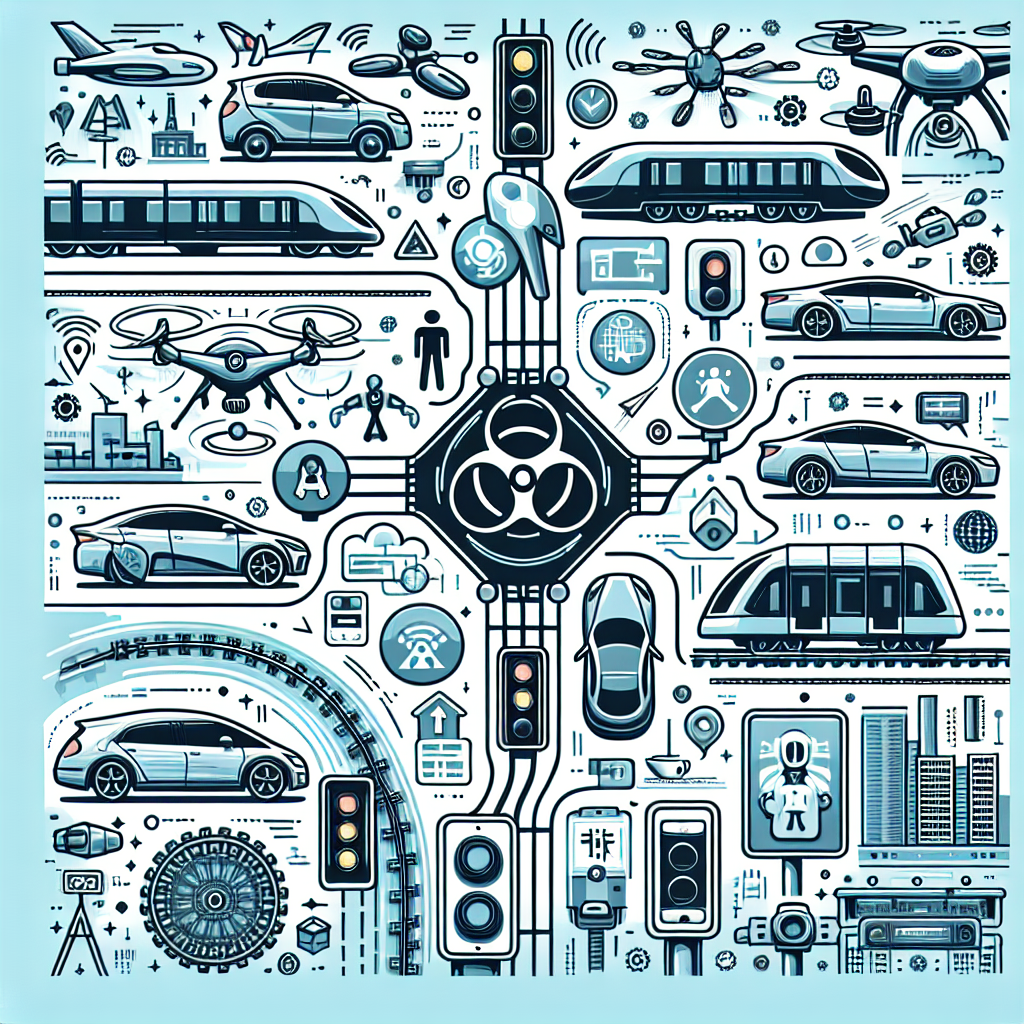The Future of AI in Transportation: Enhancing Efficiency and Safety
Artificial Intelligence (AI) has been making waves in various industries, and one of the sectors that is poised to benefit greatly from its advancements is transportation. From self-driving cars to predictive maintenance for vehicles, AI is revolutionizing the way we move from one place to another. In this article, we will explore the future of AI in transportation, focusing on how it can enhance efficiency and safety in the industry.
Enhancing Efficiency
One of the key benefits of AI in transportation is its ability to enhance efficiency. AI-powered systems can optimize route planning, reduce traffic congestion, and improve fuel efficiency. For example, AI algorithms can analyze traffic patterns in real-time and suggest the most efficient routes for drivers to take, helping them avoid traffic jams and arrive at their destinations faster.
AI can also help transportation companies optimize their fleet management. By analyzing data on vehicle performance, fuel consumption, and maintenance schedules, AI algorithms can predict when a vehicle is likely to break down and recommend preventive maintenance to avoid costly repairs and downtime.
Furthermore, AI can improve the efficiency of public transportation systems. By analyzing ridership data and traffic patterns, AI algorithms can optimize bus and train schedules to reduce wait times and overcrowding, making public transportation more attractive to commuters.
Overall, the integration of AI in transportation can lead to cost savings, improved customer satisfaction, and a more sustainable and efficient transportation system.
Enhancing Safety
Another major benefit of AI in transportation is its potential to enhance safety. Self-driving cars, for example, have the potential to reduce accidents caused by human error, which is a leading cause of traffic fatalities. By using sensors, cameras, and AI algorithms to navigate roads and make decisions in real-time, self-driving cars can react faster to potential hazards and avoid collisions.
AI can also improve safety in other modes of transportation. For example, AI-powered systems can monitor driver behavior and detect signs of fatigue or distraction, alerting drivers to take a break or regain focus. This can help reduce the number of accidents caused by tired or distracted drivers.
Furthermore, AI can improve the safety of public transportation systems. By analyzing data on passenger flow and crowding, AI algorithms can detect potential safety hazards and alert authorities to take action, such as adding more trains or buses to reduce overcrowding.
Overall, AI has the potential to make transportation safer for everyone, reducing accidents, injuries, and fatalities on the road.
FAQs
Q: Will AI replace human drivers in the future?
A: While self-driving cars have the potential to revolutionize the transportation industry, it is unlikely that AI will completely replace human drivers in the near future. Human drivers will still be needed to navigate complex and unpredictable situations that require human judgment and decision-making.
Q: How will AI affect jobs in the transportation industry?
A: AI has the potential to automate certain tasks in the transportation industry, such as route planning and maintenance scheduling. While this may lead to job displacement in some areas, it is also expected to create new job opportunities in AI development, data analysis, and other related fields.
Q: What are the ethical implications of AI in transportation?
A: There are ethical considerations to take into account when implementing AI in transportation, such as privacy concerns, data security, and the potential for bias in AI algorithms. It is important for policymakers, industry stakeholders, and the public to address these issues to ensure that AI is used responsibly and ethically in transportation.
In conclusion, the future of AI in transportation looks promising, with the potential to enhance efficiency and safety in the industry. By leveraging AI-powered systems to optimize routes, reduce traffic congestion, and improve vehicle maintenance, transportation companies can provide a more efficient and reliable service to their customers. Additionally, by using AI to enhance safety measures, such as self-driving cars and driver monitoring systems, transportation can become safer for everyone on the road. As AI continues to evolve and improve, we can expect to see even greater advancements in the transportation industry, making it more sustainable, efficient, and safe for all.

